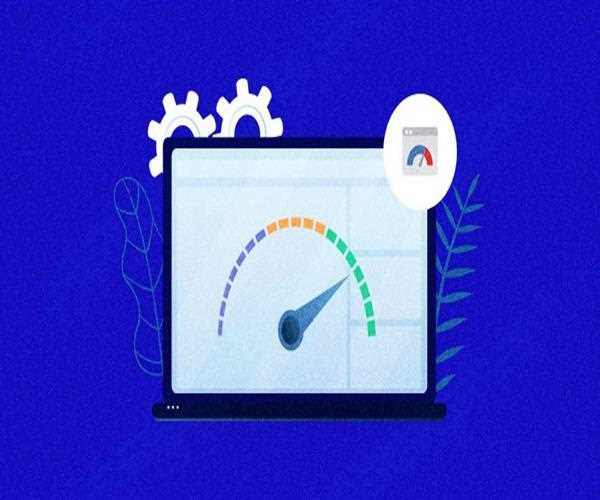Search here

11-Nov-2024 , Updated on 11/11/2024 9:42:01 PM
How To Improve Web Application Speed With Lazy Loading?
Users today want web applications to load quickly, and any delay usually results in high bounce rates. The most effective strategy for optimization of web performance is actually deferring resource loading until it is necessary. In the following sections, we will explore how to do this effectively to enhance the speed of web applications as well as the user experience.
Understanding lazy loading and its significance
This optimization technique in web development loads only the non-critical resources when they are actually needed. Or images or JavaScript scripts may happen only when they fall into the user's view or are activated. This lessens the initial loading time of the application and allows users to experience faster interaction speeds once they open the application.
Lazy loading is very effective for content-intensive applications or web pages that contain many images, videos, or complex JavaScript functionalities. It saves not just on loading time but also on bandwidth; therefore, it is very effective for applications with users who have slower network connections.
Types of lazy loading and how they are used
There are two main forms of lazy loading:
- Image Lazy Loading: Images are big resources, so they may only load when the user scrolls to them. This massively improves page load speeds. Many web applications now use "native lazy loading" with HTML by applying loading="lazy" attributes to images.
- JavaScript Lazy Loading: JavaScript files are another heavy asset. It is loaded only when necessary, such as for some interactive elements.
This helps conserve the time and eliminates the delay, besides enhancing the responsiveness of the site.
A combination of both of these techniques could give a better loading time with a good user experience.

3. Lazy loading in web applications
To implement lazy loading, just do the following:
- Native Lazy Loading in HTML and Native: Just apply HTML's native lazy loading for images and iframes by making use of the loading attribute as lazy. This does very minimal setup and works on modern browsers.
- Use Intersection Observer API: For even more control, especially when it comes to JavaScript, among other assets, look into the Intersection Observer API. This API is able to determine when an element has entered the viewport, thus allowing developers to load their resources at that time.
Other ones are JavaScript libraries and frameworks that have in-built lazy loading additives or 0.33-birthday party libraries, which make it easier to force lazy loading.
4. Lazy Loading and its Impact on Web Performance
Lazy loading slows the needless assets from loading; however, it's far more effective in many respects:
- Reduced First Time To Load: Only the key resources will load first. So it can reduce the first response time.
- Improved use of bandwidth: Since assets are loaded only as and when needed, there is also an overall reduction in data usage by users, which is quite handy for mobiles and low-bandwidth connections.
The main content is delivered much sooner; thus, improvement occurs in potential satisfaction and lower bounce rates.
Other improvements that it brings are not just in the acceleration of Web applications but also in making them efficient and resource-friendly.
Lazy loading monitoring and optimization
That therefore calls for monitoring the lazy load performance. Evidently, this comes with the burden of monitoring page load speed, interaction time, and bandwidth usage. Analysis of the outcome of lazy loading for a particular user experience may be done with Google Lighthouse or through Chrome DevTools. Continual testing and readjustment of the lazy loading strategy will maintain an optimum user experience.
If you want to know how to optimize web speed and performance, then check out our guide on Why the Internet Is Important for the Virtual World, which covers a number of enhancement techniques that are available for web applications.

Challenges and Best Practices
Although lazy loading is useful, sometimes one might face certain challenges. At times when using the older browser compatibility may be an issue, or if some of the crucial resources have already loaded, it happens in a delayed manner.
Here are some best practices:
- Optimize for important assets first. Avoid delaying any process that involves critical assets as long as possible. All necessary visuals and text should load as soon as possible to engage users.
- Optimize lazy loading for SEO: Ensure that search engines can index lazy-loaded content, as improper lazy loading might prevent visibility in the search result.
Hybrid Loading Strategies Use when the composition of an app is mixed and contains not only a large number of lazy-loaded assets but also preloading for critical ones. Then balance it to achieve better performance improvement.
Conclusion
Lazy loading, therefore, becomes a very user-centric technique in making a web application faster, loading the server, and general enhancement of the users' experience. Upon implementation and optimization of lazy loading, web developers put in place efficient applications that achieve the expectations of the modern user in efficiency performance. Hence, embracing lazy loading can be a crucial step toward delivering a faster and smoother, as well as more user-friendly, digital experience.

Student
Being a professional college student, I am Shivani Singh, student of JUET to improve my competencies . A strong interest of me is content writing , for which I participate in classes as well as other activities outside the classroom. I have been able to engage in several tasks, essays, assignments and cases that have helped me in honing my analytical and reasoning skills. From clubs, organizations or teams, I have improved my ability to work in teams, exhibit leadership.
Join Our Newsletter
Subscribe to our newsletter to receive emails about new views posts, releases and updates.
Copyright 2010 - 2025 MindStick Software Pvt. Ltd. All Rights Reserved Privacy Policy | Terms & Conditions | Cookie Policy